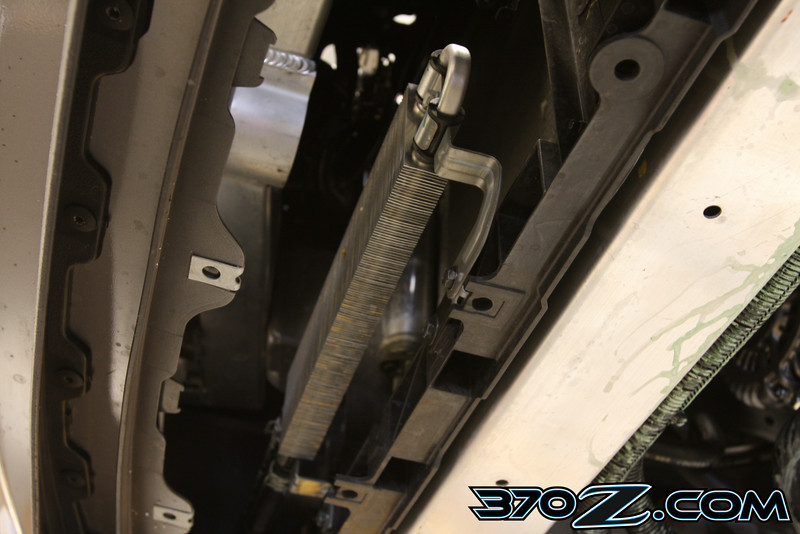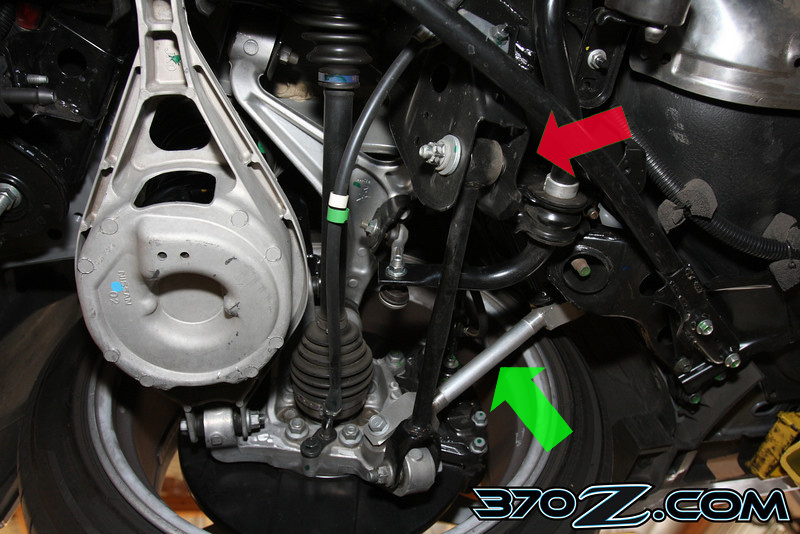Mike Kojima posted on December 29, 2008 04:00

This simple yet well thought out front suspension is a refreshing breath of air from the technological terror of a front suspension found on the 350Z. The 350Z had a complex articulating lower control arm which changed the camber curve, caster trail and scrub radius dynamically as the wheel turned. While this seems good on paper, it contributed to changes in bump steer and added more points of compliance to the front end. This resulted in vague and unpredictable steering response, especially with sticky R compound tires. We looked at the 350Z's front end and wished for something more straightforward. Thank you Nissan! A substantial tube and fin power steering cooler has been added to the 370Z. The 350Z used a rudimentary cooler consisting of some fins on one of the return hoses in the engine compartment. This cooler was inadequate and the power steering system often boiled over during track use. The new cooler is superior and mounted up front, right in the airstream.
 |
| A larger power steering cooler assures there will be no boilover on hot track days, unlike the 350Z. |
In the rear, like the front, the Z shares a lot in common with the G37, M35 and M45 sedans. The aluminum links are of a very similar 4-link design to the 350Z, i.e. forged aluminum upper and lower control arms with a lateral locater / toe control arm and a forward facing radius rod. A steel rear subframe supports all of the rear suspension links. The 350Z used aluminum here but even the mighty GT-R uses steel for the rear subframe. Did Nissan do this to increase stiffness?
 |
| The 370Z's rear suspension is identical to that found on the M35/45 and G37and fairly close to the 350Z. It uses forged alloy upper arms, lower arms and radius rod. The toe control/lateral locater rod is steel. The rear subframe is steel from the aluminum one found on the 350Z. Why did Nissan seemingly downgrade here? The GTR's rear subframe is steel as well. The weight penalty is small, only about 15 lbs. The big differences in the geometry between the 370Z and the 350Z are shown here. The forward mount of the upper control arm is located behind and above the toe control rod as indicated by the red arrow. This mount is located higher in the 370Z to reduce anti-squat. This makes the cars balance more consistent under throttle torque load and gives the car more traction on corner exit. The other change is a shorter radius rod indicated by the green arrow. This gives the outside rear wheel more toe-in under roll, reducing oversteer and improving stability in hard cornering. |